Wudang Blog / Wudang Tai Chi
Introducing Our Partners

Master Chen Shiyu is the Headmaster of the Wudang Traditional Martial Arts School and it's main instructor. He was born in Central China's Hubei Province and now is the 15th disciple of Wudang Taoist Kungfu. Master Chen Shiyu showed great interest in Wudang Kung Fu. In 1993, he left his hometown and came to Mt Wudang. He learned martial arts from different teachers for some time and then he was honored to have Grand Master Zhong Yunlong as his teacher. The Daoist Master Zhong is the 14th successor of Wudang Wushu of Sanfeng branch.

Grand Master realized that Shiyu was very hardworking and had a honest and simple mind, so he chose him as one of the closest disciples in 1996. Since then, with the strenuous cultivation from Master Zhong, Chen Shiyu has attained Internal Wudang Kung Fu which was in the past not easily spread out, especially to foreigners. All his Gongfu styles include Wudang Tai Chi, Eight Immortal, Taiyi, Bagua, Xuangong, and Xingyi and many methods of Taoist health-preserving.
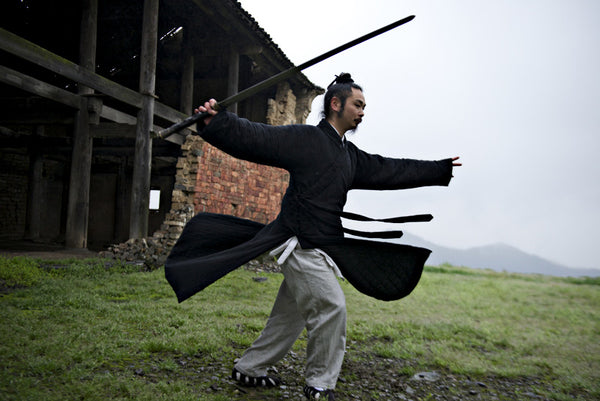
- Master Chen Shiyu became martial arts instructor in 1998 and that year he was also entered the famous Wudang Taoist Kungfu Troupe.
- Master Chen Shiyu won the championship in the Wudangshan Wushu competition in March, 2000. In the same year he went to Wuhan and participated in the Yellow Crane Tower Wushu Performance. He has participated in performances in some foreign countries and Hong Kong, Macao and Taiwan. Together with his teacher Zhong Yunlong, he has offered Wudang kungfu show for many principle leaders from China's central government. In 1999, the late Chinese general secretary Jiang Zemin paid a visit to Mt. Wudang. After watching Wudang Wushu show, he gladly wrote: "Wudang Quan is wonderful and everyone can practise it!"
- In May, 2005, Master Chen Shiyu took the troupe to Xinghai Concert in South China's Guangzhou city for Wushu show in the 5th session of Taoist concert. Shortly after, he again took the troupe, together with the mainland Taoism Association, to Taiwan for an Across-Taiwan-Strait Taoism concert.
- In September 2006, Master Chen Shiyu attained the championship of the nationwide Wudangshan-Wushu-Tournament in Wudang Tai Chi (Taijiquan).
- In January 2007, he was invited to Pengyingxianguan in Hong Kong for lecturing of Daoist knowledge and demonstration of Sanfeng Taijiquan.
- In September 2008, he participated in the Wudang area tryouts for the 3rd World Traditional Martial Arts Championships, and attained the first race in both Taijiquan and staff forms.
- In August 2010, he was invited for the documentary of Wudang Martial arts introduction that shot by Chinese Nationwide Central Television.
- In December 2010, he was given a Chinese national honor allowance for Martial Arts heritage reason.
- In June 2012, he was invited to Norway, to teach Taichi.
- In October 2012, he won the champion in the Fourth World Taichi & Health Competition.
- In November 2012, he won a Traditional Boxing Champion and an very important Sword Champion in the Fifth World Traditional Martial Arts Championship Competition.

Master Chen Shiyu vows to bring Wudang Kung Fu to high development, let more people understand it and wishes every lover of Wudang Kung Fu to be healthy in body and heart; succeed the Tradition and bring it to the world.
If you would like to explore Wudang Taoist Kung Fu, you are invited to come to Huilong Temple to study with Master Chen Shiyu!
Discover Direct Contact Information with his Traditional School:
The Spirit of Wudang Kung Fu
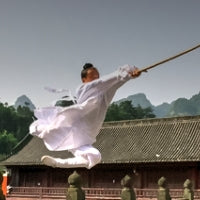 Wudang Kung Fu is one of China’s most famous systems of Wushu. It possesses a long established history and is well known both in China and abroad. By using traditional self-defense and fighting technique as its foundation, implementing theory derived from the Yi Jing (Book of Changes) and Taoist Neidan technique gradually a distinct system was created that gave shape to a truly unique style of training. The core of Wudang Martial Arts is comprised of the theory of the waxing and waning of yin and yang, the changes of the Bagua (the eight trigrams of the Yi Jing), and the phases and interactions of the Five Elements. Wudang Kung Fu encapsulates the deep and profound philosophical traditions of China including Tai Chi, Yin Yang, Five Element, and Bagua philosophical traditions and theories.It combines this theory with fighting theory and technique, training and cultivation principles, and fighting strategy as methods of searching to understand the natural laws of life.We use wushu as a method of self-cultivation in order to improve our health and our wisdom. This is the great treasure of Wudang Kungfu.
Wudang Kung Fu is one of China’s most famous systems of Wushu. It possesses a long established history and is well known both in China and abroad. By using traditional self-defense and fighting technique as its foundation, implementing theory derived from the Yi Jing (Book of Changes) and Taoist Neidan technique gradually a distinct system was created that gave shape to a truly unique style of training. The core of Wudang Martial Arts is comprised of the theory of the waxing and waning of yin and yang, the changes of the Bagua (the eight trigrams of the Yi Jing), and the phases and interactions of the Five Elements. Wudang Kung Fu encapsulates the deep and profound philosophical traditions of China including Tai Chi, Yin Yang, Five Element, and Bagua philosophical traditions and theories.It combines this theory with fighting theory and technique, training and cultivation principles, and fighting strategy as methods of searching to understand the natural laws of life.We use wushu as a method of self-cultivation in order to improve our health and our wisdom. This is the great treasure of Wudang Kungfu.
 The entire body of Wudang Kung Fu is comprised of Wuji, Tai Chi, and Liang Yi. Taijiquan, Liangyiquan, Xingyiquan, Baguazhang, Wudang Sword and other internal Wushu systems are representative of Wudang Wushu. Wudang Kung Fu maintains the traditions and unique styles of the different systems.It uses Daoist philosophy and theory to guide, and also combines the study of Daoist medicine, the Yi Jing, and nei dan health cultivation methodology as its overall guiding principles and disciplines.Alongside these it fuses wushu fighting skills and exercises to strengthen the body and places great emphasis on understanding the body’s energy channels and acupuncture points.Wudang Kung Fu greatly stresses the importance of establishing a strong foundation in internal practice.By practicing to synthesize and coordinate the internal qi and the external body there is born a unification of internal and external.Using the qi for explosive power, borrowing power, becoming adept in using the soft to overcome the hard, using stillness to regulate movement, possessing a great unification of soft and hard, nimbly turning, circling, and evading and many other techniques are all characteristic traits of “internal kungfu”.
The entire body of Wudang Kung Fu is comprised of Wuji, Tai Chi, and Liang Yi. Taijiquan, Liangyiquan, Xingyiquan, Baguazhang, Wudang Sword and other internal Wushu systems are representative of Wudang Wushu. Wudang Kung Fu maintains the traditions and unique styles of the different systems.It uses Daoist philosophy and theory to guide, and also combines the study of Daoist medicine, the Yi Jing, and nei dan health cultivation methodology as its overall guiding principles and disciplines.Alongside these it fuses wushu fighting skills and exercises to strengthen the body and places great emphasis on understanding the body’s energy channels and acupuncture points.Wudang Kung Fu greatly stresses the importance of establishing a strong foundation in internal practice.By practicing to synthesize and coordinate the internal qi and the external body there is born a unification of internal and external.Using the qi for explosive power, borrowing power, becoming adept in using the soft to overcome the hard, using stillness to regulate movement, possessing a great unification of soft and hard, nimbly turning, circling, and evading and many other techniques are all characteristic traits of “internal kungfu”.
Relaxed, natural movement, a soft external and strong internal, moving like clouds and flowing water, continuous and unimpeded action and many other techniques are Wudang’s great attributes that distinguish it from other wushu.
Taoist Health Cultivation
In keeping with improvements in modern living conditions, people all over the world are looking to improve their health. As a result there are many different systems of health improvement that are springing up all over. China possesses thousands of years of development in self-defense practices, different artistic forms of self-expression and various methods and systems of health cultivation.The reason that Wudang Wushu has been able to continuously prosper up to today without being drowned out by modern trends is because it maintains a truly unique cultural character; its primary focus is on its oldest and most practically applicable value – health cultivation.
 Ancient Taoist practices apply the theories of combining movement and stillness, internal and external, refining and cultivating, and the physical with the mental/emotional/spiritual as the major focuses for cultivation.These practices are used to balance and fortify the body’s original qi, vitality and spirit.The cultivation of jing, qi and shen as well as the physical body are given significant importance.Specifically in the methods of refining and cultivating one follows the method of the meridians or energy channels of the body. Taoist Health Cultivation uses dao yin (Taoist stretching and breathing exercises), qigong, wushu/gongfu methods in order to harmonize and improve the circulation of the meridians, improve the circulation of qi and blood, and harmonize yin and yang within the body – thereby achieving great improvement in overall health.
Ancient Taoist practices apply the theories of combining movement and stillness, internal and external, refining and cultivating, and the physical with the mental/emotional/spiritual as the major focuses for cultivation.These practices are used to balance and fortify the body’s original qi, vitality and spirit.The cultivation of jing, qi and shen as well as the physical body are given significant importance.Specifically in the methods of refining and cultivating one follows the method of the meridians or energy channels of the body. Taoist Health Cultivation uses dao yin (Taoist stretching and breathing exercises), qigong, wushu/gongfu methods in order to harmonize and improve the circulation of the meridians, improve the circulation of qi and blood, and harmonize yin and yang within the body – thereby achieving great improvement in overall health.
 At the present time there are several Taoist Health Cultivation practices that are suitable for all to learn and practice, including Taiji, standing meditation, Ba Duan Jin (the Eight Pieces of Brocade Qi Gong), Taiyi/Liangyi Quan, Five Animals Qi Gong, Taihe Quan, push hands, etc.These practices are soft and slow-moving, and are helpful in coordinating breathing and intention/thinking, regulating blood and circulation, and relaxing the spirit and mind.They can help in lowering the degree of blood viscosity, reducing cholesterol, and blood stasis; improving blood circulation, and can greatly improve the condition of blood clotting related problems of the internal organs that may be at risk or in poor health and cause for concern.For example – those at risk of heart attack, cerebral thrombosis (blood clotting), early stage cirrhosis of the liver, etc. can greatly benefit by adopting these practices into their daily lives.By opening the meridians and removing sickness and toxic substances from the body one can therein begin to improve the overall yin yang balance of the internal organs. Taoist Health Cultivation methods can greatly improve and strengthen practitioners’ immunity to sickness and disease as well as slow the aging and deterioration of the different organ system of the body.It can be seen that these practices are quite suitable and beneficial for everyone – especially young children, the elderly and infirm and those suffering from waist and neck problems.
At the present time there are several Taoist Health Cultivation practices that are suitable for all to learn and practice, including Taiji, standing meditation, Ba Duan Jin (the Eight Pieces of Brocade Qi Gong), Taiyi/Liangyi Quan, Five Animals Qi Gong, Taihe Quan, push hands, etc.These practices are soft and slow-moving, and are helpful in coordinating breathing and intention/thinking, regulating blood and circulation, and relaxing the spirit and mind.They can help in lowering the degree of blood viscosity, reducing cholesterol, and blood stasis; improving blood circulation, and can greatly improve the condition of blood clotting related problems of the internal organs that may be at risk or in poor health and cause for concern.For example – those at risk of heart attack, cerebral thrombosis (blood clotting), early stage cirrhosis of the liver, etc. can greatly benefit by adopting these practices into their daily lives.By opening the meridians and removing sickness and toxic substances from the body one can therein begin to improve the overall yin yang balance of the internal organs. Taoist Health Cultivation methods can greatly improve and strengthen practitioners’ immunity to sickness and disease as well as slow the aging and deterioration of the different organ system of the body.It can be seen that these practices are quite suitable and beneficial for everyone – especially young children, the elderly and infirm and those suffering from waist and neck problems.
Wudang Store Taoist and Tai Chi Clothing
The difference in the traditional way is the quality of tailoring.
 Experience is important when tailoring clothing for western people. Since there is a lot of difference in proportions and sizes when it comes to western people. The most common problems for beginner tailors with western people are: "long or too short pants or sleeves, wrong collar sizes or shirt lengths." With your measurements Wudang Store tailors real Taoist and Tai Chi clothing that truly fit you! We stand for affordable high quality and custom tailored Taoist and Tai Chi clothing. Every part of clothing has its problem parts. Some areas might last shorter than others. If considered correctly the clothing overall will last very long without breaking. It is important to understand this to get the best quality and the most function from every part of clothing. The traditional way of tailoring is not easy.
Experience is important when tailoring clothing for western people. Since there is a lot of difference in proportions and sizes when it comes to western people. The most common problems for beginner tailors with western people are: "long or too short pants or sleeves, wrong collar sizes or shirt lengths." With your measurements Wudang Store tailors real Taoist and Tai Chi clothing that truly fit you! We stand for affordable high quality and custom tailored Taoist and Tai Chi clothing. Every part of clothing has its problem parts. Some areas might last shorter than others. If considered correctly the clothing overall will last very long without breaking. It is important to understand this to get the best quality and the most function from every part of clothing. The traditional way of tailoring is not easy.
Wudang Store mostly uses natural Material with natural coloring. The fabrics are not heavy chemical colored, this maintains the durability of each fabric. But if you expose our natural fabric to a lot of sunlight the colors might weaken. To our natural fabrics we have: "Hemp, Bamboo, Linen, Cotton, Sheep Wool, Silk" Most of this materials are woven by hand. You can see the difference on each fabric line. The lines are not 100% the same like machine woven. Our natural materials are 100% non allergic, antibacterial and skin friendly. Doesn't smell and will not shrink when washed.
The Wudang Store Sword Guide
Our store is selling only hand forged swords which are forged by Masters in the Wudang region. Before buying the most important thing to consider is the purpose of the sword you want to buy. Depending on the purpose the maintenance, which is needed for the sword, can vary a lot.
This Guide is focusing on easy understanding and helping you to decide which kind of sword is for you.
Should I use a stiff or flexible blade?
 The balance of stiff blades is more on the head, while flexible blades tend to have the balance closer to the hilt. There are also semi flexible blades which still feel good in balance but wont bounce around as much as full flexible blades do. For Kung Fu performances you mostly want a flexible blade, since the power and stability of your movements can be measured and shown through your flexible blade. For Tai Chi you might want a semi flexible or stiff blade. With a stiff blade the fluid movements of Tai Chi feel very good and give you a stable sense of direction during your exercise.
The balance of stiff blades is more on the head, while flexible blades tend to have the balance closer to the hilt. There are also semi flexible blades which still feel good in balance but wont bounce around as much as full flexible blades do. For Kung Fu performances you mostly want a flexible blade, since the power and stability of your movements can be measured and shown through your flexible blade. For Tai Chi you might want a semi flexible or stiff blade. With a stiff blade the fluid movements of Tai Chi feel very good and give you a stable sense of direction during your exercise.
The most used types of steel for our swords
- Chrome steel, sometimes called stainless steel has a lot of chrome content which is protecting the sword against natural corrosion. Stainless steel is never 100% rust proof, but does have a higher rust resistance depending on the chrome content. More chrome means more resistance but also will make the steel softer and less durable. Stainless steel is NEVER made for cutting. The chrome steel shines with the small amount of maintenance time needed. To keep chrome steel healthy simply wipe it with a dry towel or cloth. Be sure to clean it from salty sweat or other acid containing substances after each practice. Chrome steel is fine for performances and daily training. You can identify chrome steel by its grey color and if the quality is high also mirror polishing is possible.
- Carbon Steel can vary a lot depending on tempering and quality. Sometimes it is the cheapest steel if the tempering is missing or the quality of the steel is not good. Our swords use normally the expensive high carbon steel. which is a more advanced version of the normal carbon steel and has slightly more carbon content. With more carbon content the steel will become harder, but at the same time the rust resistance is lower. To make up for this we always temper our high carbon steel blades and give them the proper polishing which is needed for a fine sword. With polishing the steel surface becomes small and so the area where rust can attack is smaller. This makes maintenance easier and more resistant to rust. If the maintenance comes to late and you find rust on your carbon blade, please go to a proper smith to let him polish it for you. If you try to polish the rust away yourself, you will ruin the tempering and polishing. Our traditional swords are polished in multiple layers and the tempering is the soul of every sword. We highly recommend to bring the sword to a proper smith if the blade is damaged or rusty. Our high carbon steel makes fine cutting swords. You can identify high carbon steel of its clear surface. Instead of grey color, the carbon steel looks white and shiny like a mirror. High carbon steel needs the most maintenance time, and should be maintained right after usage.
- Manganese Steel is the new technology and is mostly used in industry or heavy duty tools. Compared to high carbon steel, the manganese steel can be much cheaper with the same hardness properties. Manganese has more resistance to rust compared to carbon, but still needs proper maintenance. Manganese steel is hard enough to cut iron nails without being scratched. The properties of manganese steel are perfect for heavy duty cutting. Manganese steel is in most ways superior to carbon steel. Only the highest quality of high carbon steel and the finest forging could still be superior to a manganese blade.
What is the correct length for my sword?
If held in reverse grip at your side it should come to your ear. There is no must be when it comes to sword length. Usually if you like to leave a stronger impression in your performances, you might want a longer sword. But longer swords need more control and are usually slower in turning than shorter swords. Shorter swords are easier to balance. Longer swords need more attention in proper balancing. Wudang Store is making the job here for you, we check every sword before selling and the balance is always very good. Two handed swords have a proper length when they reach above your head. Single handed swords should not be longer than your head when held in reverse grip at your side.
What do i need for maintaining my blade?
If you have a chrome steel blade you dont have to worry much, only wipe once in a while after touching or training with a simple dry tissue or a piece of cloth.
These rules are important:
- Do not touch with fingers! On your skin is always some sweat or salty fat which is very aggressive to metal.
- Always put your sword back into the sheath, oxygen exposure will sooner or later make your blade rusty.
- Avoid salt, or other acid substances
- Cover your sword with this maintenance oil after usage.
- If this sword is not used, check the metal once a month and eventually reapply the oil
- Metal needs dry air, if you are living in tropical environments you have to check the blade more often.
For carbon or manganese steel blades please use our sword oil. The purpose of the sword oil is to prevent the oxygen to touch your blade. For the first time make sure you apply plenty of oil. Use a tissue or piece of cloth to apply the sword oil. Make sure you do not leave free spots on your blade. The steel should be covered in oil to prevent the touch of oxygen on the blade.
If the blade was expensive and made of high carbon steel be sure to coat the sword with oil right after usage. If the blade is still coated in oil, there is no need to reapply the oil. For manganese steel it is fine to check and apply oil once in a week or once in a month. This is strongly depending on how often you put the sword out of the sheath.
My blade is rusty! Can i fix it myself?
If the blade is made of chrome steel, then yes you can easily fix it with sandpaper. But if you do not fix it properly the blade will be rusty very fast again. This is because the sandpaper will scratch the surface and if not carefully polished, you will make the surface bigger and rust has a bigger area to attack the blade. The result is faster rusting and more often the use of sandpaper. When you intend to fix your blade from the rust be sure to use sandpaper with different stages. We recommend to use between 600 - 1000 grits for weak till medium corrosion. Polishing should be done in multiple steps starting with a 1000 grit paper and finish with 5000 grits. We do not recommend to use sandpaper on expensive swords or mirror polished blades. Please go to a professional smith.
I hope this clears most of your questions, if you have more please post a comment. We will put your question in this page for everyone to understand.
The meaning of Silk Reeling (纏絲勁) in Tai Chi
"Silk reeling" - the name refers to any of a large number of exercises in which the object is to move your hands in a repeating pattern very evenly, with no jerking or variation in speed.
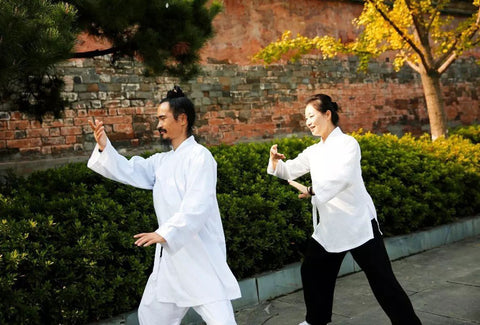
The name comes from literally reeling silk off the cocoons of silkworms, a task traditionally done by young girls. If you pull too hard or unevenly, the silk thread breaks. Short silk threads were worth much less than long ones, so the movement must be done very smooth and evenly, same as in Tai Chi.
Silk Reeling is a distinct feature of Wudang Tai Chi and Chen Style Tai Chi, referring to continuous rounded and spiral movements utilising the whole body and limbs on top of the regular move from point A to point B.
Basically it means that power does not transfer in a linear fashion but it coils and spirals along the limbs. Thus there are two directions (clockwise & anti-clockwise).
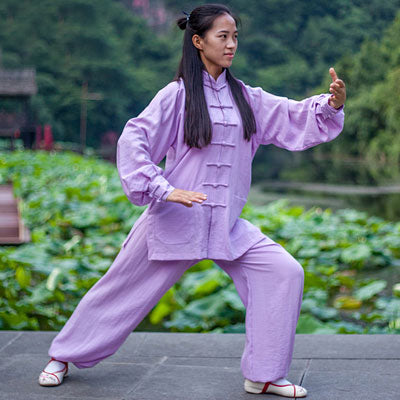
Where do I buy a real Taoist Uniform?
The Wudang Mountains are located right next to the small city Wudangshan, where our tailor is working with his wife in their own atelier, every piece of clothing he tailors is made accordingly to traditional ancient Chinese standards, the materials he is using are of natural fiber - a special combination of cotton and linen material, which was used by tai chi masters and students long time ago in Old China, so it is until now. Each taoist garment and tai chi uniform ordered from our store you can be sure is made by hand up to your exact body size using best materials possible.
Wudang-Store is supported by local taoists in Wudangshan, since we opened our store in year 2012 we have happy customers only, because to find a better quality is simply not possible in whole China nor the internet.
On the picture below is the inner life of the working place of our tailor Lou He Hua
When I visited our tailor Lou He Hua I made few pictures of the view outside his atelier, those are rare pictures of Wudangshan, because since now it is forbidden by the Hubei province government selling vegetables from the ground and street food in the Wudang Mountains area.
Now everybody has the opportunity to buy a Tai Chi Uniform directly from Wudang online in our Online Shop.



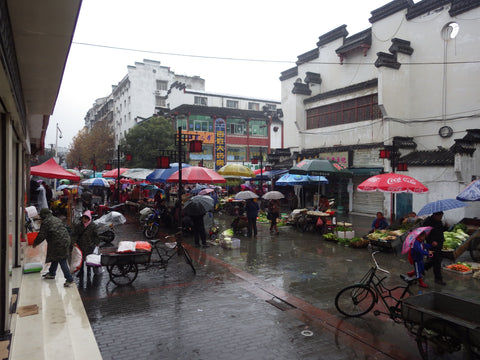
 Nothing will be posted on your behalf.
Nothing will be posted on your behalf.

